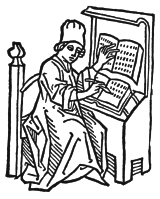By Jack Lyon, the Editorium
You can't do much carpentry with your bare hands, and you can't do much thinking with your bare brain. —Bo Dahlbom
High school English class. Freshman year. The teacher explained how to:
- Come up with a thesis statement.
- Create an outline of arguments supporting the thesis statement.
- Write a paper based on that outline.
That's actually a terrible way to write! It requires you to organize your thoughts before you know what those thoughts actually are. But there is a better way.
Brainstorm, Organize, Write
What are your thoughts about a particular subject? In the days before computers, you'd find out like this:
- Get a package of index cards, something like these.
- On each card, write an idea related to your thesis (the fancy word for whatever it is you want to write about). Do not try to do this in any kind of order; you're brainstorming here: good ideas, bad ideas, any ideas—they all go down on the cards. When your brain is empty, stop.
- On a big desk or table, spread the cards out in front of you. Keep them messy.
- Read the cards and stack those on a certain subject together until you have several stacks. Discard (pardon the pun) those that don't belong anywhere or that now seem irrelevant or stupid.
- Put the cards in each stack in some kind of order. Importance? Chronology? You choose.
- Put the stacks in some kind of order. Each stack represents a section of your paper.
After you've captured and organized your thoughts, write your paper, starting with the first card and ending with the last. Each stack gets a subheading. Each card gets a paragraph. When you're finished, edit your paper as needed.
Card-Based Writing Programs
But, again, that was in the days before computers. We now have much better ways of doing what I've just described, with new card-based writing programs popping up all the time. Here are some that I recommend for the kind of writing I've explained in this article:
Milanote. $9.99 a month (billed annually).

Milanote is the most expensive of the programs listed here, but it's also the slickest. Cards can be created and then placed on the screen in any order you like. After you have them all down, organize them into columns. Finally, export the whole thing as a Word document, a Markdown document, or plain text, ready for editing. Milanote is elegant, a pleasure to use.
Speare. $4.95 a month (billed annually).

Speare doesn't support free-form card placement; each paragraph is a card, and all cards must be arranged in a "board." After creating and organizing your cards, "compile" them into a document, copy the document, and paste into Word or another word processor.
SuperNotecard. $19 a year.

SuperNotecard includes various kinds of metadata you can use to organize your cards: headings, flags, ratings, categories, references, and much more. If you're writing a novel, SuperNotecard is probably the way to go, as you can create and link to cards for characters, settings, themes, and so on. At just $19 a year, it's ridiculously cheap.
Notebox Disorganizer is one of my favorites. I've written about it before. It's simple but powerful, and best of all, it's free! (Sorry, PC only.)

I hope you'll give these programs a try, especially if you're feeling stuck in your writing. Brainstorming, organizing, and then writing can make all the difference. Write down the chaos!
Readers Write
After reading last week's article on listing keyboard shortcuts, macro expert Paul Beverley wrote:
I have a version that spreads the list out a bit and covers more aspects. As you'll see from the attached, it's alphabetic in two ways.
http://www.wordmacrotools.com/macros/K/KeystrokeLister
Thanks to Paul for making this resource available.















